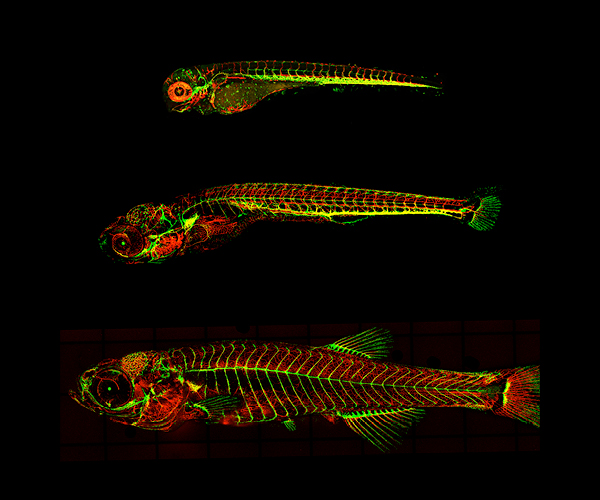
Image of transgenic zebrafish at different developmental stages.
Credit: Hyun Min Jung and Daniel Castranova, Weinstein Lab, NICHD/NIH
Since its inception, NICHD has supported basic science research to increase our understanding of human behavior and biology. These insights provide the foundation for discovering new and better ways to prevent, diagnose, and treat health conditions and diseases.
In May, NICHD researchers identified how eye loss occurs in blind cavefish. The team found that loss of eye tissue, which occurs within a few days of the fish’s development, happens through epigenetic silencing of eye-related genes. Many of the genes identified in the study are also linked to human eye disorders, suggesting that these genes are conserved across evolution and may be similarly regulated in people. Understanding the regulation of these genes in eye disorders could lead to new treatments.
In July, an NICHD-led study uncovered a protein responsible for long-term pain and inflammation that occur after nerve injury in mice. Identifying the role of the protein, dual leucine zipper kinase, may inform new ways to manage pain in people. Opioids are often prescribed to treat pain following injury or surgery, but misuse can lead to addiction and even death by drug overdose. With more work, the findings offer a potential alternative to opioids for pain management.
In August, NICHD researchers identified neurons that prevent sensory overload in zebrafish. The findings help explain how the brain filters the constant stream of information that comes from the environment, separating what’s important from what’s not. This work may improve understanding of neurological disorders that involve problems with this filtering process, such as schizophrenia, Tourette syndrome, and obsessive-compulsive disorder.
 BACK TO TOP
BACK TO TOP